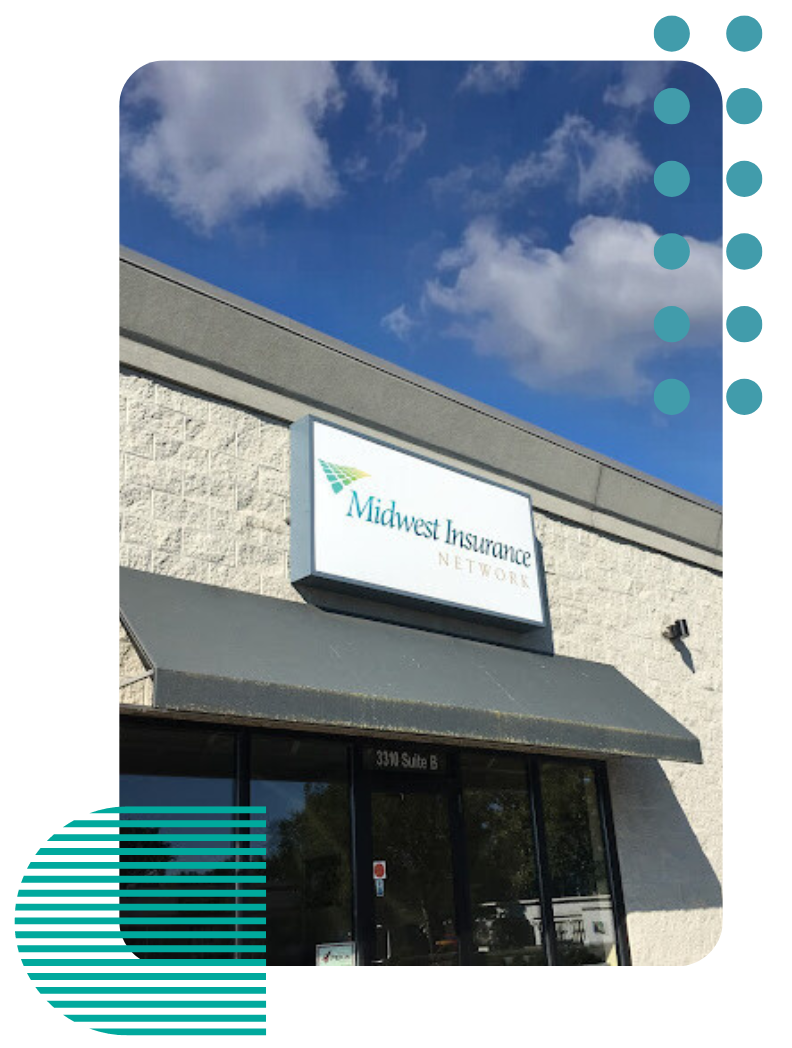Top 3 Recommended Policies
Index
Why Are Ohio Churches Facing Higher Insurance Premiums?
Understanding Replacement Cost and Its Impact on Ohio Church Insurance
Challenges Specific to Ohio Churches in the Current Insurance Market
Strategies for Ohio Churches to Secure Better Insurance Coverage
Preparing for the Future: What Ohio Churches Should Keep in Mind
Contact Us
Phone
agency@midwest-insure.com
Location
Northwood, OH
3310 Woodville Road, Suite D
Northwood, OH 43619
Elmore, OH
361 Rice Street
Elmore, OH 43416
Churches in Ohio, like many religious institutions across the United States, are facing unprecedented challenges when it comes to securing affordable and comprehensive insurance coverage. Rising premiums, shrinking coverage options, and an increasingly turbulent insurance market have left many congregations scrambling to protect their properties and assets. Understanding the current landscape of church insurance in Ohio is essential for church leaders, trustees, and members responsible for safeguarding their place of worship.
Recent developments in the insurance industry, including the fallout from natural disasters and shifting insurer appetites, have had a profound impact on how churches approach insurance. For example, the devastation caused by hurricanes Helene and Milton in late 2024 contributed to significant premium hikes nationwide, affecting even inland states like Ohio. To navigate this complex environment effectively, it’s crucial to grasp the factors driving these changes and explore strategies that Ohio churches can employ to secure the best possible coverage.
For those interested in a broader perspective on these challenges,
Smart Church Solutions offers valuable insights into the rising costs and complexities facing church property insurance today.
Why Are Ohio Churches Facing Higher Insurance Premiums?
The surge in insurance premiums for churches is not isolated to coastal states prone to hurricanes or wildfires; Ohio churches are also feeling the pressure. One key reason is the ripple effect of catastrophic events in other parts of the country. The destruction wrought by hurricanes Helene and Milton in the 4th quarter of 2024 led insurers to reassess risk models and increase premiums across the board, including in regions like Ohio that are not directly affected by hurricanes.
Another contributing factor is the difficulty insurers face in underwriting church properties. According to Charles Cutler, president of ChurchWest Insurance Services, “Unregulated businesses are difficult to underwrite.” Churches often operate with unique risk profiles and may not follow the same operational standards as commercial businesses, making it more challenging for insurers to price policies accurately.
Moreover, many insurers are pulling back from high-risk markets or narrowing their coverage options. For instance, Church Mutual, a major player in church insurance, has withdrawn from offering property coverage in high-risk hurricane zones such as Louisiana. This cautious approach signals a broader trend of insurers reassessing their exposure to religious institutions, which can indirectly affect pricing and availability in states like Ohio.
These dynamics contribute to a marketplace where churches must pay significantly more for insurance than they did just a few years ago. Insurance Business Magazine highlights how churches nationwide are battling to obtain affordable coverage as insurers rethink their appetite for the religious sector.
In addition to external pressures, the internal operations of churches can also complicate the insurance landscape. Many congregations host a variety of activities, from community outreach programs to youth events, which can increase liability risks. For example, a church that runs a daycare or offers counseling services may face additional scrutiny from insurers due to the potential for claims arising from these activities. As a result, churches are often encouraged to implement risk management strategies, such as safety training and regular property assessments, to mitigate risks and potentially lower their premiums.
Furthermore, the financial strain of rising insurance costs can have a cascading effect on church operations. With budgets already stretched thin, many congregations may find themselves forced to cut back on essential programs and services that serve their communities. This situation raises concerns about the long-term sustainability of these institutions, as they navigate the dual challenges of maintaining their missions while managing escalating operational costs. As churches in Ohio and beyond grapple with these issues, the conversation around insurance and risk management is likely to become increasingly critical in the years to come.

Understanding Replacement Cost and Its Impact on Ohio Church Insurance
One of the most significant drivers of rising insurance premiums is the increase in replacement cost estimates for church buildings. Replacement cost refers to the amount it would take to rebuild a property in the event of total loss. Historically, churches could expect to insure their buildings at around $100 per square foot. However, recent data shows that many churches across the U.S., including those in Ohio, are now facing minimum replacement cost figures ranging from $300 to $450 per square foot.
This dramatic increase is due to several factors, including inflation in construction materials and labor, stricter building codes, and the need for specialized craftsmanship in historic or architecturally unique church buildings. The higher replacement cost directly translates into higher insurance premiums, as insurers base their coverage limits and pricing on these updated valuations.
Churches must ensure that their insurance policies reflect accurate replacement cost valuations to avoid being underinsured. An undervalued policy can leave a church vulnerable to significant out-of-pocket expenses following a claim. Engaging with insurance professionals who understand the nuances of church property valuation is critical for Ohio congregations.
Furthermore, the unique architectural features of many Ohio churches, such as stained glass windows, steeples, and intricate woodwork, can complicate the valuation process. These elements not only add to the aesthetic value of the buildings but also require skilled artisans for repairs or replacements, further driving up costs. Additionally, churches often serve as community hubs, hosting events and services that necessitate a larger space, which can also impact the overall replacement cost. Understanding these intricacies is vital for church leaders as they navigate their insurance options.
For a detailed discussion on how replacement costs are reshaping church insurance pricing,
Church Property Insurance provides an in-depth analysis of this trend. This resource can help congregations not only understand current market dynamics but also prepare for future changes in the insurance landscape, ensuring that they are adequately covered in an ever-evolving environment.
Challenges Specific to Ohio Churches in the Current Insurance Market
Ohio churches face several unique challenges within the current insurance environment. While the state is not prone to hurricanes, it does experience severe weather such as tornadoes, ice storms, and flooding, which can cause significant property damage. These risks, combined with the broader market turbulence, have led some insurers to reevaluate their willingness to provide coverage or to impose stricter underwriting criteria.
Another challenge is the growing number of insurance policy cancellations affecting churches. For example, hundreds of United Methodist churches in the Rio Texas Annual Conference lost their property insurance in late 2023, a situation that has raised alarms nationwide. Though this example is from Texas, it reflects a broader trend of insurers withdrawing from certain church markets, leading to reduced options and increased premiums even in states like Ohio.
Additionally, major insurers such as Brotherhood and State Farm have downgraded or exited some markets, further shrinking the pool of available coverage. Industry experts express concern about the stability of remaining insurers, including Church Mutual, which is closely watched for its ability to maintain strong financial ratings.
These market shifts underscore the importance for Ohio churches to be proactive in their insurance planning. Developing relationships with brokers who specialize in church insurance and exploring alternative risk financing options can help mitigate some of these challenges.
Furthermore, the financial strain on churches due to rising insurance costs can also impact their community outreach and service programs. Many congregations rely on their property to host events, provide shelter, and serve as a community hub. As insurance premiums climb, churches may find themselves forced to cut back on these vital services, which can have a ripple effect on the communities they serve. This situation highlights the need for churches to not only secure adequate insurance coverage but also to advocate for fair treatment in the insurance market, potentially collaborating with other religious organizations to amplify their voices.
Moreover, the evolving landscape of insurance regulations and requirements can add another layer of complexity for Ohio churches. With the introduction of new legislation aimed at addressing climate change and natural disaster preparedness, churches may find themselves needing to adapt their facilities and practices to comply with these regulations. This could involve investing in upgrades such as improved drainage systems or reinforced structures, which can further strain their budgets. Staying informed about these changes and seeking guidance from legal and insurance experts can help churches navigate this challenging environment more effectively.
For more on the insurance market turbulence affecting churches,
Finance & Commerce offers a compelling look at how these disruptions are impacting religious institutions.
Strategies for Ohio Churches to Secure Better Insurance Coverage
Given the complexities of the current insurance market, Ohio churches need to adopt strategic approaches to secure affordable and adequate coverage. One effective method is exploring alternative risk financing mechanisms. Since 1988, some religious organizations, including Roman Catholic dioceses, have partnered with firms like Gallagher to implement self-insurance and reinsurance programs that reduce reliance on traditional insurers.
Self-insurance pools allow churches to share risk collectively, potentially lowering premiums and increasing control over claims management. Additionally, churches can invest in risk mitigation measures such as installing modern fire suppression systems, upgrading electrical wiring, and maintaining proper security protocols. Demonstrating proactive risk management can make a church more attractive to insurers and may result in premium discounts.
Another important step is working with insurance brokers who understand the unique risks and operational realities of churches. Brokers can help identify insurers with a strong track record in the religious sector and negotiate terms that reflect the church’s specific needs. They can also assist with accurate replacement cost valuations and ensure that policies include necessary coverages such as liability, property, and abuse coverage.
For an industry perspective on alternative risk financing and market updates, the Arthur J. Gallagher & Co. report provides valuable insights into how churches are adapting to the evolving insurance landscape.
Furthermore, Ohio churches can benefit from engaging in community risk assessments, which involve evaluating the specific hazards that may affect their operations. By conducting these assessments, churches can identify vulnerabilities, such as potential natural disasters or local crime rates, and develop tailored strategies to address them. This proactive approach not only enhances safety for congregants but also strengthens the church’s position when negotiating with insurers, as it demonstrates a commitment to minimizing risks.
Additionally, churches should consider forming alliances with other local religious organizations to create a collective bargaining group. By pooling resources and sharing information, these groups can leverage their collective size and influence to negotiate better insurance rates and terms. This collaborative approach not only fosters community spirit but also provides a stronger platform for advocating for the specific needs of faith-based organizations in the insurance market.

Preparing for the Future: What Ohio Churches Should Keep in Mind
The insurance environment for Ohio churches is unlikely to stabilize in the near term. Rising replacement costs, market withdrawals, and the ongoing impact of natural disasters will continue to influence premiums and coverage availability. Churches must remain vigilant and informed to protect their properties and ministries effectively.
Regularly reviewing insurance policies, updating property valuations, and maintaining open communication with insurance professionals are essential practices. Additionally, churches should consider investing in risk management and loss prevention strategies to reduce the likelihood and severity of claims. This might include conducting regular safety audits, implementing emergency preparedness plans, and training staff and volunteers on best practices for risk mitigation. By fostering a culture of safety and awareness, churches can not only protect their physical assets but also ensure the well-being of their congregations and community members.
Finally, staying connected with denominational resources and peer networks can provide valuable support and information. Many religious organizations are actively seeking innovative solutions to these insurance challenges, and sharing experiences can help Ohio churches navigate this difficult terrain more confidently. Collaborative efforts, such as joint purchasing groups for insurance or shared training sessions on risk management, can lead to cost savings and enhanced protection. Engaging with local community organizations may also yield partnerships that bolster both safety measures and outreach initiatives, creating a more resilient church presence in the community.
While the path forward may be challenging, informed decision-making and strategic planning can help Ohio churches secure the coverage they need to continue their vital work in their communities. Understanding the nuances of insurance policies, including exclusions and endorsements, is crucial for churches to tailor their coverage to their unique needs. Furthermore, as technology evolves, exploring cyber insurance options may become increasingly important, especially for churches that utilize digital platforms for communication, donations, and community engagement.
For ongoing updates and expert analysis on church insurance trends, resources like
Insurance Business Magazine remain excellent sources of information. Additionally, attending workshops and seminars focused on church management and insurance can provide practical insights and networking opportunities, empowering church leaders to make informed choices that will safeguard their ministries for years to come.




